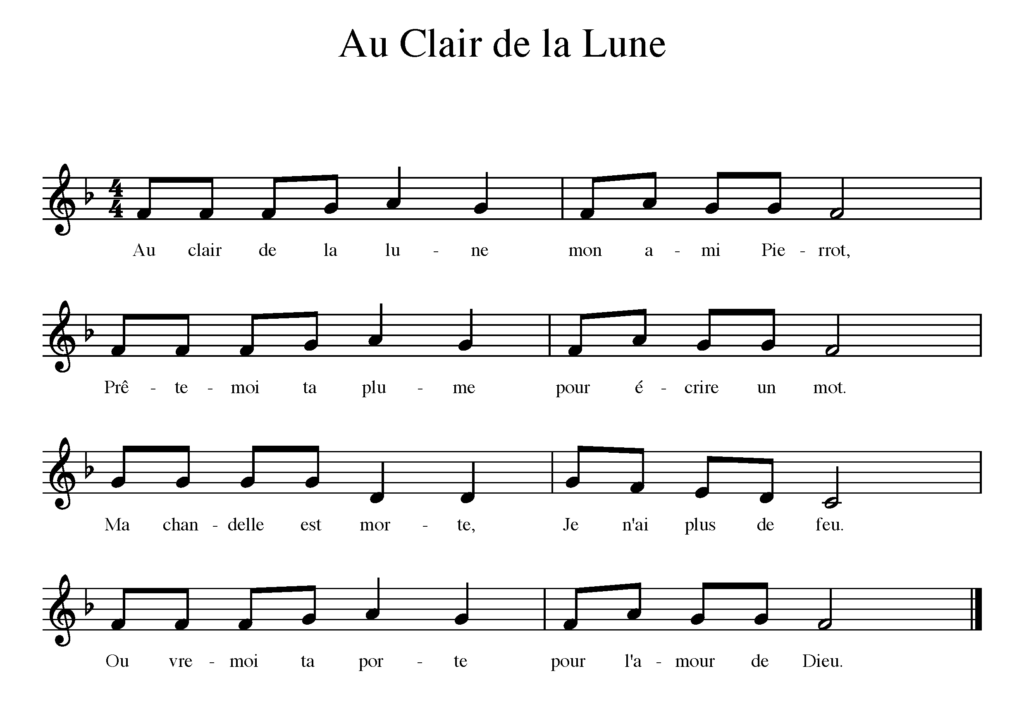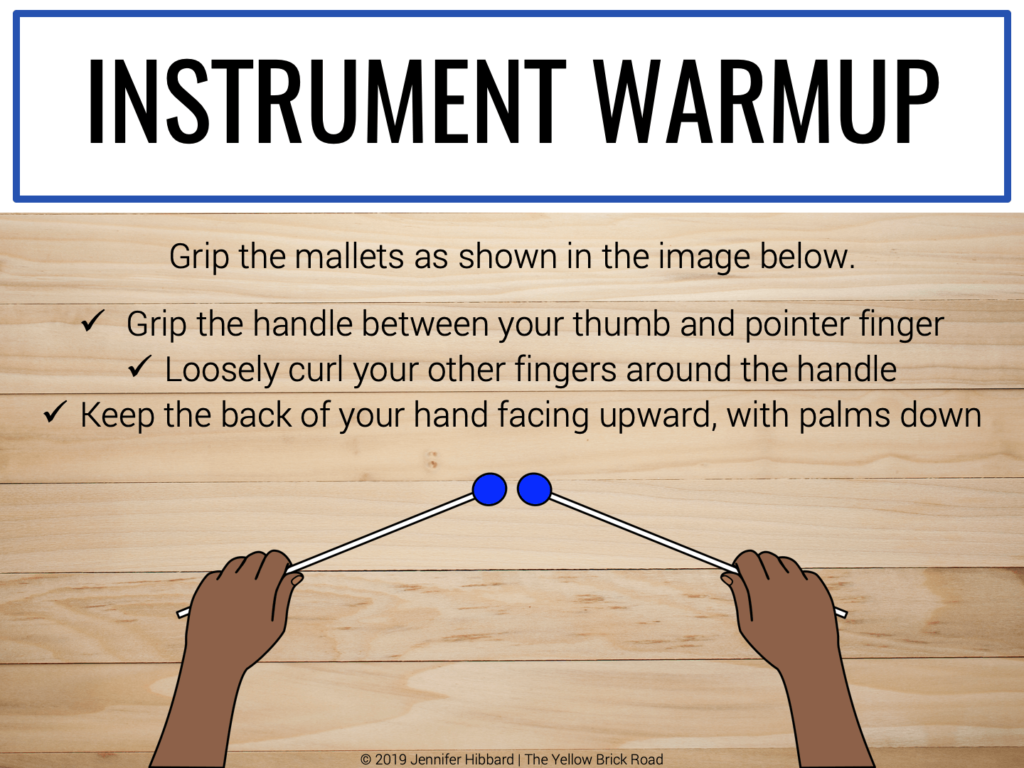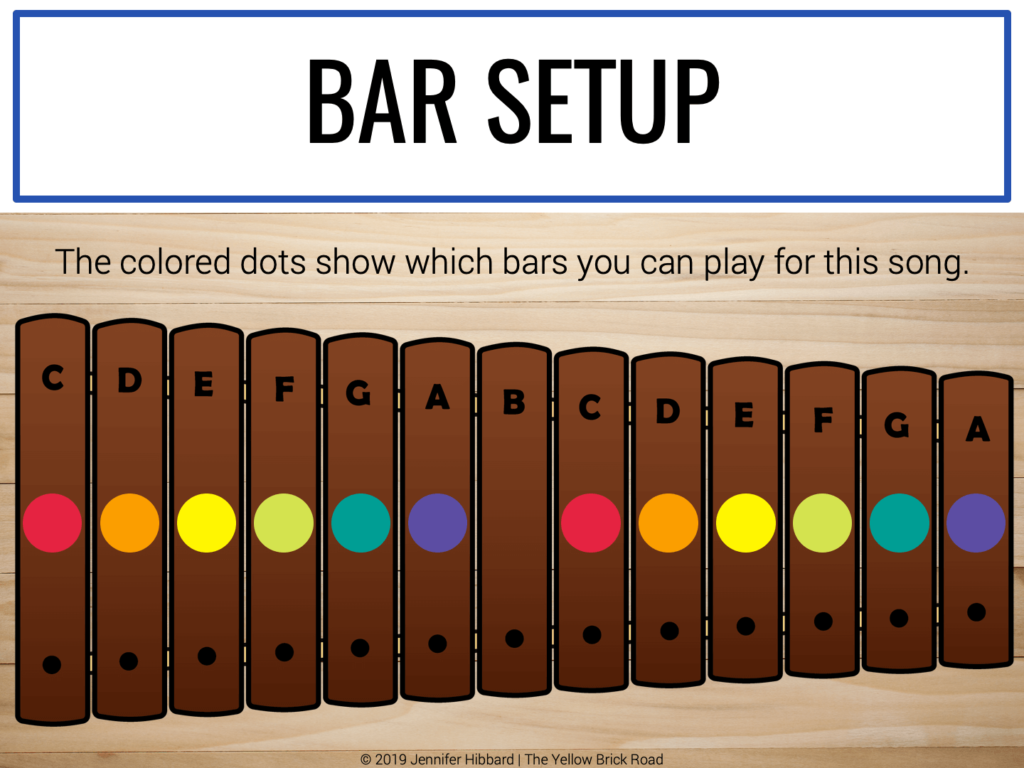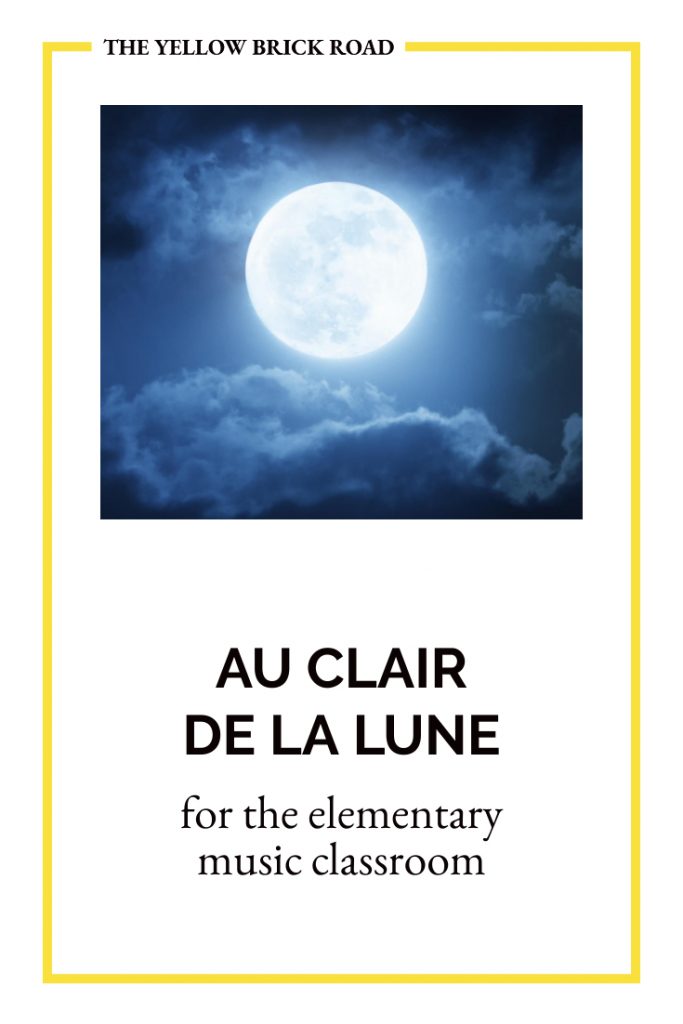I was today years old when I learned that the oldest known recording of the human voice contains the second verse of Au Clair de la Lune. You can listen to the recording HERE.

For most of us, this song brings up memories of learning the recorder, Tonette, or Flutophone. Au Clair de la Lune has a small range and simple rhythms, making it ideal for beginning instrumentalists.
CREATING A SMALL ENSEMBLE
If you have access to multiple pitched instruments, such as recorders, Boomwhackers™, and/or Orff instruments, consider creating a small ensemble. For example, you might have an ensemble consisting of recorders, Orff instruments, and singers. Students can rotate in and out of each group as they practice. With a variety of ways to make music, they’ll be able to find what sparks their interest.
Best of all, small ensemble work in the classroom translates easily into an informance. If students get to choose their groups, there’s a better chance of positive and prolonged engagement.
HAVE VISUALS AT THE READY
When it comes to playing instruments, it’s important that students have plenty of visuals, live models, and reminders. Reminding students of the correct way to hold their mallets can be as simple as showing them a visual.

If students already know how to place and remove bars on their Orff instruments, then a simple visual to show the notes they’ll be playing will make bar setup easy. Best of all, it means more ownership from your students, which equals more engagement and a sense of responsibility (i.e., confidence).

NOTATION IN COLOR
Colored notation is a useful modification for many students, and makes playing Boomwhackers™ simple. You can also purchase these colored stickers for your Orff instruments. As students gain confidence, you can slowly transition (note-by-note) back to standard notation. Click HERE to see more ideas for colored notation.

